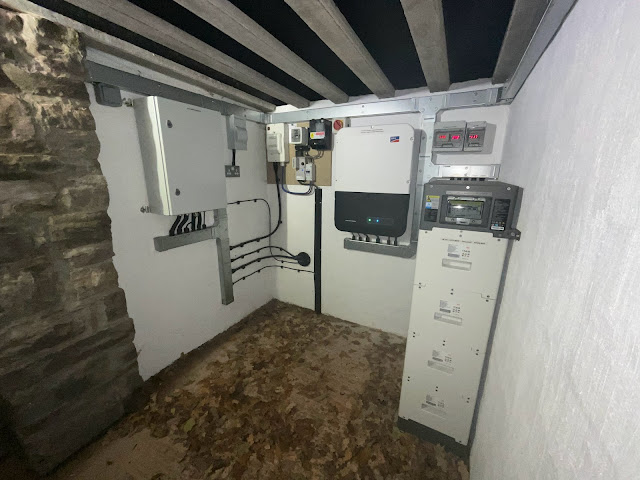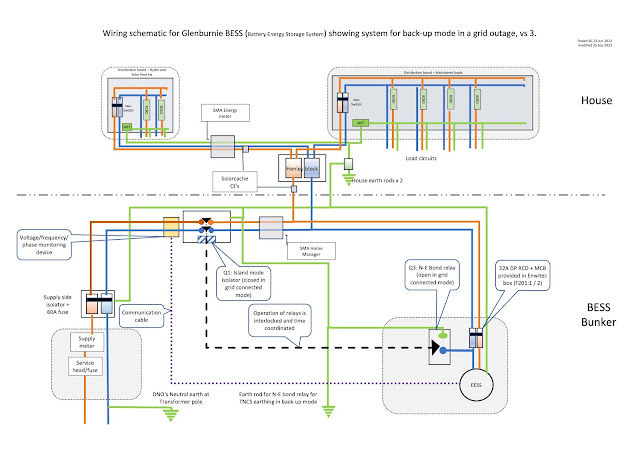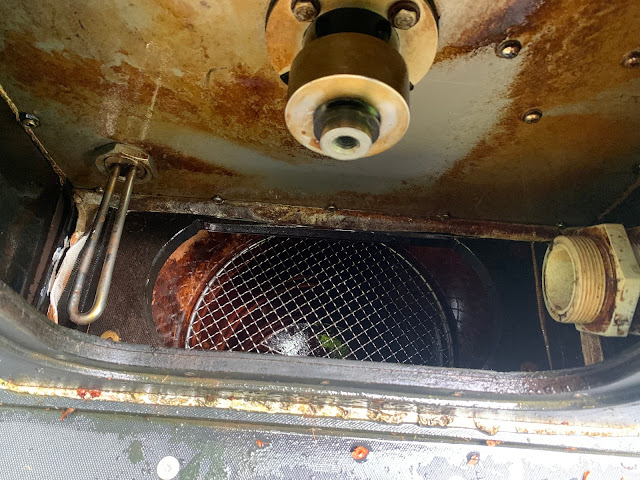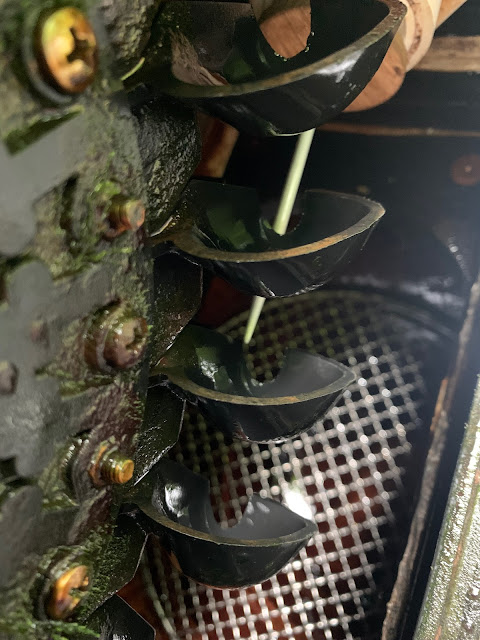The inverter that connects my Powerspout to the grid does more than just convert DC power to AC; by the load it imposes on the alternator, it determines the speed at which the shaft turns, and the speed at which the shaft turns is critical if a pelton is going to extract the maximum power from the head and flow of water available.
I run my inverter in what is called 'turbine mode'**; run like this, the load the inverter imposes on the alternator is determined from a 'mathematical table' stored in memory in the inverter, that tells the inverter how much load to apply depending on what DC voltage it is receiving from the alternator.
The 'table' is really an equation relating DC input voltage to AC output watts, and whilst a new inverter is delivered with a table chosen by the manufacturer, the table can be changed by the user.
A user might want to change the table because the factory parameters may not suit the performance characteristics of his hydro site, in particular the inverter may not allow the pelton to rotate at its optimum speed; the table in the inverter will work with the factory settings but it will almost certainly not work to produce the very best efficiency.
In a small hydro installation where power outputs are so small, tweaking efficiency to the best possible is a good idea to get the installation to be as productive as possible, and it has been for this reason I've been playing around with optimising the table in my WindyBoy inverter.
Without going into more detail than is necessary to explain how a table relating DC voltage to AC watts is constructed, some familiarity with Microsoft Excel is required.
The relationship between these two parameters is described by a single equation relating x and y, where x is DC voltage and y is AC watts.
The factory default table uses the equation: y = 0.0001x^3 - 0.0306x^2 + 2.92x - 83.
When this is plotted on a graph with x values chosen to be in the range of the DC voltage produced by my Powerspout, it produces the green curve in the graph:
Last year, I spent time carefully investigating what voltage produced the most watts output, for each of the nozzle sizes I operate my Powerspout with over the course of the year.As a result of that exercise, I came up with a revised table, giving a revised curve, which is shown by the orange line. You can see it is a flatter curve than the green one and that at low power outputs (100 to 150 Watts) when the DC voltage is around 170 volts, the line starts to curve upwards without ever reaching the x axis. The effect this had in practice was that at this low level of power output the inverter failed to connect to the grid, - presumably because the look-up table confused the inverter regarding the load it should be applying.
Last year therefore, I could not continue to generate with my smallest nozzle (0.53 litres/s) using the inverter with this table in its memory and I had to swap to another inverter which still had the factory default table.
This year, with summer progressing toward the driest time of year in September / October, I wanted to find a curve which would be able to work at this low flow. Playing around in MS Excel has yielded the blue line in the graph which I hope will do the trick.
You can see it almost overlays the orange line for most of its course, and that is good because it means it will make the inverter operate at the optimal points determined by my investigations last year, and crucially it does not start to curve upwards when power outputs are low.
Time will tell if my playing around has worked. Already in the few weeks I have been using this revised curve, when flows are still around 1.5 litres/s, there is a marginal improvement in power output compared to the orange curve, lifting water to wire efficiency by just one half of a percent! (53.3 to 53.8 %).
Every efficiency gain counts !
Here's a picture of loading the revised formula to the inverter from a laptop, running SMA's WindyBoy set up programme, and using SMA's USB Service Interface cable:
** Most inverters used for Powerspouts are solar PV inverters which are programmed to operate in Maximum Power Point Tracking mode; MPPT works for a hydro; but in this mode the inverter is constantly seeking the maximum power point, which for a water turbine is not changing, and so the output is seen to be constantly fluctuating when it could be a nice straight line.



































